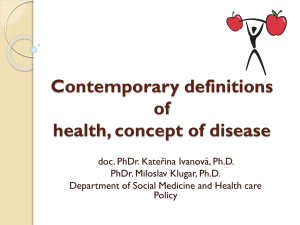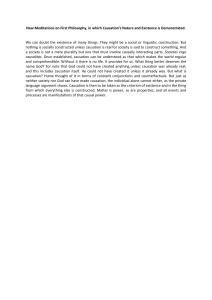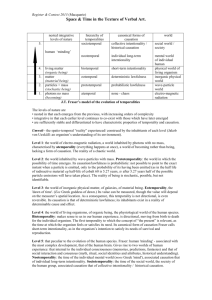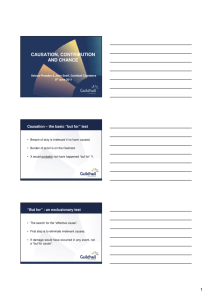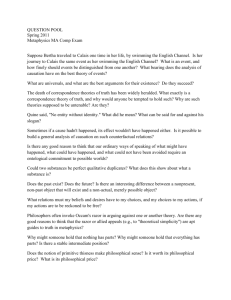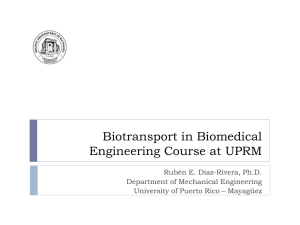Health and Disease Concepts: A Comprehensive Overview
advertisement
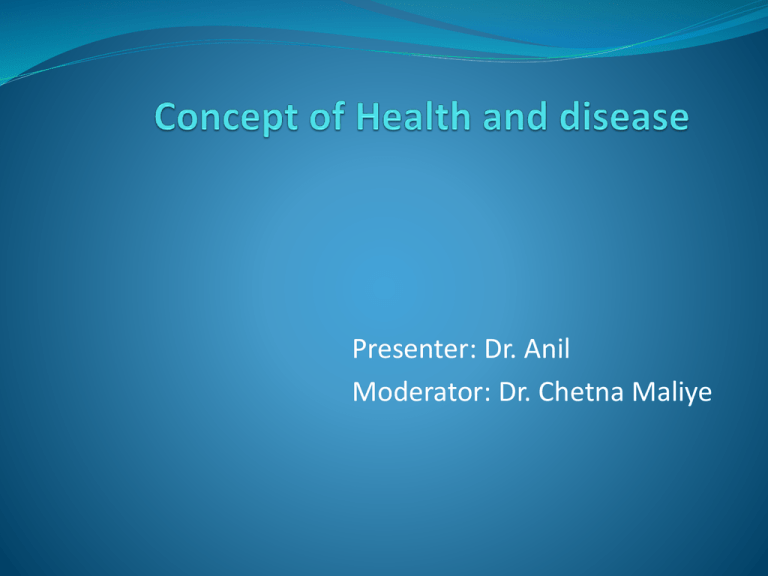
Presenter: Dr. Anil Moderator: Dr. Chetna Maliye Framework Introduction Changing Concept of Health WHO definition of health Positive Health Health Paradigm Determinants of Health Concept of Well-being Indicators of Health Concept of Disease Causation of disease Health and Illness Natural History of Disease References Introduction “Health “ in history Why we are concerned about ‘health’ Health - Changing concepts Biomedical Ecological Psychological Holistic Changing concepts of Health Biomedical Concept- “absence of disease” human body = machine, disease = consequence of the break down Doctor’s task = repair of machine. Limitation- it has minimized the role of environmental, social, psychological & cultural determinants of health. Changing concepts of Health Ecological Concept Health = is a dynamic equilibrium between man & his environment, Disease = maladjustment of the human organisms to the environment. The concept supports the need for clean air, safe water, ozonic layer in the atmosphere, etc. to protect us from exposure to unhealthy factors. Changing concepts of Health Psychosocial Concept Health is not only a biomedical phenomenon, but one which is in influenced by social psychological, cultural, economic and political factors of the people concerned. Changing concepts of Health Holistic Concept – biomedical + ecological + psychosocial concept. It has been defined as unified or multidimensional process involving the well being of the whole person in the context of his environment. Holistic concept implies that, all sectors of society have an effect on health What is ‘Health’ Oxford dictionary State of being well in body or mind Webster The condition of being sound in body, mind or spirit especially freedom from physical disease or pain Perkins “A state of relative equilibrium of body, form and function which result from its successful dynamic adjustment to forces tending to disturb it. It is not passive interplay between body substance and forces impinging upon it but an active response of body forces working towards readjustment.” WHO Definition of health “Health is a state of complete physical, mental and social well-being and not merely the absence of disease or Infirmity.” – Constitution of the World Health Organization, July 1946. Physical component… -The state of perfect functioning of body or state in which every cell & every organ is functioning at optimum capacity & in perfect harmony with the rest of the body. Mental component Mental Health- Is a state of balance between individual and surrounding.. Easy to say if its grossly abnormal but difficult in minor disturbances. Distinction between mental and physical health is artificial. Social component Social health is an aspect of health that includes social relationships as part of broader concept of health. It has two elements: Individual and societal The less isolated, the greater the sense of control & empowerment, & the more socially integrated a person is, the less they suffer from a range of physical & mental disorders. Social component (Contd.) The Regional framework for health promotion in the Western Pacific Region 2002-05 stresses the role of social capital in health promotion. social capital - trust, social interaction & social connections Other components/dimensions Spiritual Vocational Socio-economic….etc Positive Health Positive health describes a state beyond the mere absence of disease. Operationalised by a combination of excellent status on biological, subjective, and functional measures Positive health predicts increased longevity (correcting for quality of life), decreased health costs, better mental health in aging, and better prognosis when illness strikes. Health Paradigm Determinants of Health Health system Sociocultural Ageing of population Science & technology Information & communicat ion Socioeconomic Environmen tal Gender Equity & Social justice Behavioral Biological Human rights Concept of Well-being Components Objective components Standard of living level of living Subjective component Quality of life Standard of living Refers to the usual scale of our expenditure, the goods we consume and the service we enjoy. It includes the level of education, employment status, food, dress, house, amusement and comforts of modern living. WHO: “Income & occupation, standard of housing, sanitation and nutrition, the level of provision of health, educational, recreational and other services. Level of living Used in US 9 Components Health, food consumption, education, occupation and working condition Housing, Social security Clothing Recreation and leisure Human right Quality of life The condition of life resulting from the combination of the effects of the complete range of factors such as those determining health, happiness(including comfort in the physical environment and the satisfying occupation), education, social and intellectual attainments, freedom of action, justice and freedom of expression. A composite measure of physical, mental and social wellbeing as perceived by each individual or group of individuals. Indicators of Health Physical Quality of Life Index Includes Infant mortality Life expectancy at age one and Literacy Scale 0 to 100 = worst to best ‘Money is not everything’ Does not measure economic growth Measures social, economic and political policies Human Development Index (HDI) Combines indicators representing 3 dimensions 1. Longevity – Life expectancy at birth 2. Knowledge – adult literacy rate & mean year of schooling. 3. Income – real GDP Per Capita in Purchasing Power Parity(PPP) in US dollars Index = (Actual value) – (Minimum Value) (Maximum value) – (Minimum Value) Human Poverty Index Introduced in 1997 Measures deprivation in basic dimensions (Longevity, Knowledge, Income) For developing countries(HPI-1)A long & healthy life – vulnerability to death at a relatively early age. 2. Knowledge – adult literacy rate 3. Standard of living – average of- %age of population not using an improved water source & %age of children under weight-for-age. 1. Concept of Disease “A condition in which body function is impaired, departure from a state of health, an alteration of the human body interrupting the performance of the vital functions.” - Webster. Oxford English Dictionary – the condition of body or some part of organ of body in which its functions are disrupted or deranged. Ecologically – ‘a maladjustment of human organism to the environment’ Simplest definition – ‘opposite to Health’. HEALTH AND ILLNESS The Health-Sickness spectrum Historical Theories for causation of disease “Supernatural causes”& Karma Theory of humors (humor means fluid) The miasmatic theory of disease Theory of contagion Germ theory Epidemiological Triad Multi-factorial causation Web of causation Environment Agent ………Supernatural to multi-factorial causes… Host Epidemiological triad Agent Factors Physical Agents Chemical Agents Biological Agents Nutritional agents Environmental Factors Physical Environment Biological Environment Social Environment Host Factors Socio-demographic Factors Psycho-social Factors Intrinsic Characteristics Web of causation Change in life style Abundance of food D Obesity Hyperlidemia Stress Smoking Emotional Disturbance Lack of physical activity Aging & other factor Hypertension Increase catacholamine thrombotic activity Coronory atherosclerosis Coronary occlusion Myocardial Infarction Myocardial Infarction Changes in walls of arteries Natural History of Disease Spectrum of disease Disease in many Forms.. Acute Chronic/insidious Carrier Subclinical Case: ICEBERG PHENONMENON Example: Cholera , Polio, hypertension, malnutrition etc. Some terms.. Disease- biological concept. Means physiological/psychological dysfunction Illness –socio-pathological concept. Means - subjective feeling of not being well. Sickness – Biological concept of social dysfunction. References 1. 2. 3. 4. 5. 6. 7. WHO. Tech. Report Series 137. WHO. 1952. WHO.Constitution Of World Health Organization. 1946. WHO. Role of Health sector in Food and Nutrition. Tech. Report Series 137. Geneva. 1980. IGNOU. Concepts in Nursing. Available online at: http://www.ignou.ac.in/edusat/BNS/BNS101-Blk2-3-4/Block1en/3866color.pdf WHO. Ageing and Health. A health promotion approach for developing countries. WHO, Regional Office for the Western Pacific United Nations Avenue.Manila, Philippines;2000.11-15. Ghai OP, Gupta P. Essential Preventive Medicine. Vikas Publishing House Pvt Ltd. India;1999:23,817-819. Park K. Park’s textbook of preventive and social medicine. 20th edition, 2009. Banarsidas Bhanot publishers, Jabalpur, India Thank you………
